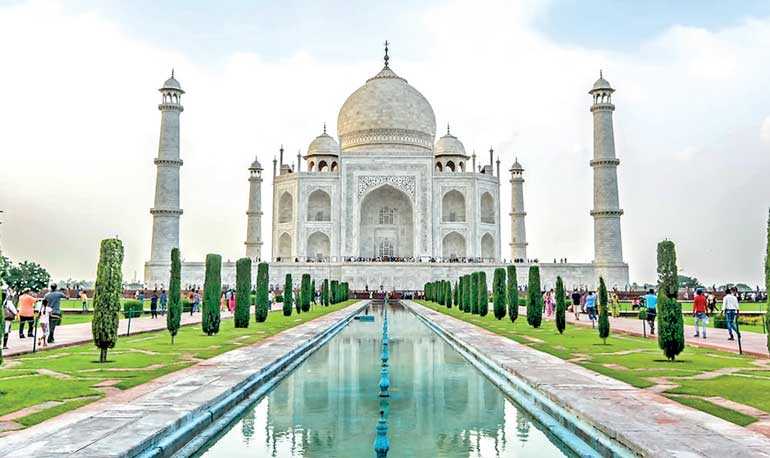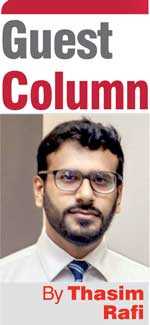Saturday Apr 05, 2025
Saturday Apr 05, 2025
Monday, 30 December 2019 00:00 - - {{hitsCtrl.values.hits}}

From the beautiful landscapes of north Pakistan, the Taj Mahal and the bustling city life of Dhaka, to the cultural masterpieces in Kandy and Anuradhapura and the immaculate beaches in the Maldives, South Asia truly has a lot to offer
South Asia has a population of 1.8 billion people which is close to 25% of the world’s population. Its GDP (PPP) is at $12.7 trillion.
The emergence of India as a global power, the massive investments by China in Pakistan and Sri Lanka in the Gwadar Port and The Port City in Colombo, Bangladesh's rise as a major tech hub and garment manufacturer, the Maldives being continuously recognised as a tourist marvel and Sri Lanka being named the number one destination to travel by Lonely Planet, has gained South Asia prominence in the last decade. The brand of South Asia has been revamped.
There is a lot that we can work on to make this brand stronger, but recent tensions between India and Pakistan has not helped at all. The SAARC has for decades worked hard to ensure collaboration and progressive development in the region. What is now needed is a revisit and a new strategy to revitalise the South Asian brand.
Compared to the EU, NATO, ASEAN and Arab League, the South Asian region does not have the same bond to move forward. However, there are many areas we can work together on:
1. Cross tourism
There is plenty of potential for cross tourism in the region. South Asia is diverse and distinct, with unique travel destinations ranging from the beautiful landscapes of north Pakistan, the Taj Mahal and the bustling city life in Dhaka, to the cultural masterpieces in Kandy and Anuradhapura and the immaculate beaches in Maldives. South Asia truly has a lot to offer and a joint tourism committee is a good step forward to promote tourism packages.
2. A Joint Visa system
Something similar to the Schengen Visa can be implemented in the region to boost tourism. Tourists will not need to individually apply for visas but can get one visa for the entire South Asian region. 
3. Joint investment
For foreign investors, the region would be more attractive it if more investment options were provided for them. A person who buys an apartment in Mumbai, Islamabad, or Dhaka can be offered the choice of buying a villa or cabana in Sri Lanka and the Maldives. This would increase the investment portfolio which will benefit the entire region. The Port City in Colombo, which is a multi-billion dollar project by CHEC China, will definitely change the investment paradigms and certainly boost the entire region.
4. Boosting the start-up ecosystem
Start-ups will have the opportunity to operate in a larger market space than being confined to one country. By opening up and reducing the restrictions to operating in South Asian countries, can also be collaborations between different nationalities and the start-up process simplified. A business might be able to attract more investment if they identify themselves as a South Asian start-up rather than one from a specific country. The South Asian brand name will certainly help.
5. Poverty eradication
South Asia remains one of the poorest regions in the world, the main reason for which is poor governance and corruption. A joint committee can be formed to take more action in eradicating poverty. More programs can be conducted and ideas shared as to how to do this.
6. Forums and events
There needs to be more events and forums organised in order to attract investment and share ideas and knowledge. Forums focused on AI, tech, fintech, tourism and education can be organised more frequently.
7. Global warming
South Asia remains one of the regions that produces the largest levels of pollution, and a lot needs to be done in terms of plastic and marine pollution. A committee can be set up to address the issue holistically.
South Asia is truly a gem, rich in diversity and with massive potential from a young population. With proper strategies and a holistic approach it can become one of the most successful and popular areas in the world.
The writer is an international consultant, focusing on areas such as Sustainable Tourism and Regional Reconciliation. He can be reached via email at [email protected]
Discover Kapruka, the leading online shopping platform in Sri Lanka, where you can conveniently send Gifts and Flowers to your loved ones for any event including Valentine ’s Day. Explore a wide range of popular Shopping Categories on Kapruka, including Toys, Groceries, Electronics, Birthday Cakes, Fruits, Chocolates, Flower Bouquets, Clothing, Watches, Lingerie, Gift Sets and Jewellery. Also if you’re interested in selling with Kapruka, Partner Central by Kapruka is the best solution to start with. Moreover, through Kapruka Global Shop, you can also enjoy the convenience of purchasing products from renowned platforms like Amazon and eBay and have them delivered to Sri Lanka.
Discover Kapruka, the leading online shopping platform in Sri Lanka, where you can conveniently send Gifts and Flowers to your loved ones for any event including Valentine ’s Day. Explore a wide range of popular Shopping Categories on Kapruka, including Toys, Groceries, Electronics, Birthday Cakes, Fruits, Chocolates, Flower Bouquets, Clothing, Watches, Lingerie, Gift Sets and Jewellery. Also if you’re interested in selling with Kapruka, Partner Central by Kapruka is the best solution to start with. Moreover, through Kapruka Global Shop, you can also enjoy the convenience of purchasing products from renowned platforms like Amazon and eBay and have them delivered to Sri Lanka.